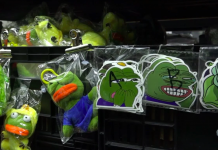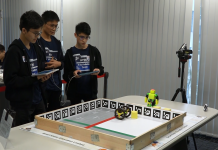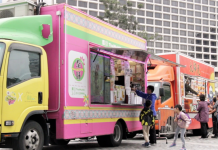The challenge of practicing green-parenting in consumerist Hong Kong
Reporters: Raven Hui, Jasmine Ling, Scarlet Shiu, Lily Yu
Editor: Brianna To
Environmental advocate Mok Ho-kwong treasures spending time with his 23-month-old son. He works four days a week so they can enjoy more time together. He raises his child in a very simple way. He says he has spent less than HK$500 on new baby products since his son was born and mainly uses handed down items passed on from relatives and friends. Instead of buying their children new toys, Mok says parents should take their children to experience and explore nature.
Mok follows green parenting principles, which promote the idea of raising children in the most natural way. For Mok this covers all aspects of daily life such as clothing, food, lifestyle and transportation.
Some people may find it difficult to accept these principles, especially those from the older generations. Michelle Wong, the founder of a green parenting workshop, says some older people may be concerned when children play with second-hand or recycled products, which they think are dirty. Wong adds it is usually younger parents who are more open the idea of green parenting as they more aware of the need for environmental conservation.
Birthdays and festivals can trigger toy buying frenzies, generating massive waste. One way to cut down on consumption and waste is to hold toy swaps – where families can bring toys that are no longer wanted to swap with others. Such activities are slowly gaining popularity as the general public becomes more environmentally aware. Helen Wong, co-founder of a social enterprise called “ohmykids”, arranges toy-swapping activities twice a year. All the unwanted toys must be fully functional, whole and clean. Most children bring small toys and figures to swap with others. They are excited when they see these toys because they are new and they can have them for ‘free’. Through toy-swaps, people have come to realise buying toys from stores is not the only option.
Apart from toy swaps, helping children to make their own toys – especially from recycled materials – is another way to cut down on consumption and waste. Some parents re-use cardboard to make toys with their children. There are no limits to how children can play with these toys apart from their imagination.
However, green parenting is not always easy. It requires extra effort and may create extra work and stress for caregivers. It is always more convenient to use new and even disposable items, says Davidson Lee, a father of two and a volunteer helper at “Picturing Central and Western District”, a community family engagement activity where children could improvise to make their own toys.
To take up the challenge of green parenting involves overcoming inconveniences and in the end, it is attitude that makes the difference, says environmentalist Mok Ho-kwong. He says parents should think about the benefits green parenting can bring to the family, the children, the community and the environment.









































